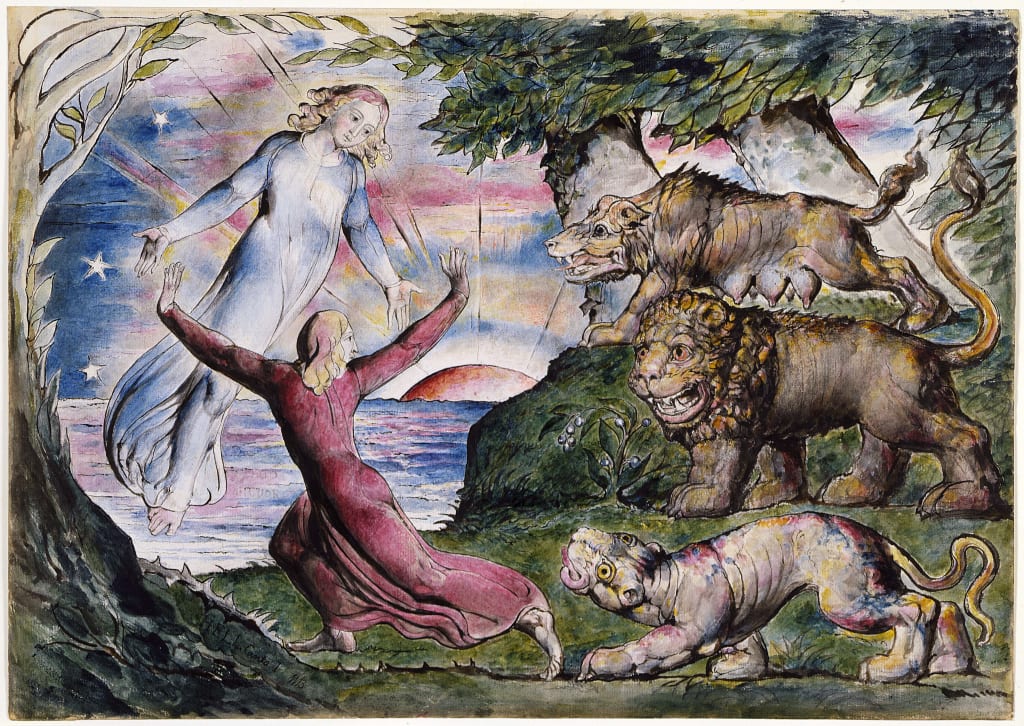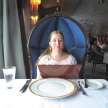William Blake and Childhood Poverty
Poetry and Social Justice

The poet and artist, William Blake, spent most of his life living in London, eaking out a living as an engraver. The London of Blake’s day was a dark, violent, and oppressive place where violence and exploitation of the poor and vulnerable, specifically child abuse, was rampant. In 1822, the British Parliament passed the Martin’s Act, which prohibited the cruel treatment of animals; legislation preventing cruelty towards children was not passed until much later. During Blake’s lifetime, you could buy three children from an orphanage or workhouse for the price of a horse. (Mayall) Poor and unwanted children were subject to appalling living and working conditions and beatings from both their employers and parents. Corporal punishment was a fixture of the British school system and would remain so until the 1990s. Much of Blake’s work addressed the issues of his day rather directly or indirectly and was inspired by his strong but unconventional religious and spiritual beliefs. In discussing the themes of innocence and experience, Blake gives a voice to the abused underclasses. (Martin 1)
William Blake believed that his poetry and engravings were divinely inspired. He was born into family of what was known as “dissenters,” those who did not follow the Church of England; they were possibly Baptists. Blake himself disapproved of the Church of England and did not follow any specific religious denomination, though he had a strong spiritual bent and belief in God. (Campe 3) His unusual and controversial religious beliefs are expressed through his art which he felt a moral and sacred obligation to create. Songs of Innocence and Experience shows Blake’s views on human nature. Blake describes innocence and experience as “two contrary states of the human soul” and the poems in this body of work show many of its subjects from two different perspectives: one childlike and idealistic, the other more mature and world-weary. When read together, the parallel poems highlight contradictions in their intended subject. The England of Blake’s day may have a rich and prosperous place but only thrived due to an oppressed underclass. Children may be pure innocents but the world is filled with forces which can destroy them or turn them into ferocious and corrupt monsters. (Campe 6)
The companion pieces Songs of Innocence and Songs of Experience deal with man’s essential purity which is corrupted by the hardships and evils of the world. The themes of purity and corruption are expressed in the two corresponding Chimney Sweeper poems through the use of black and white. Little Tom Dacre, the sweep in the Innocence version, is presented as an angelic figure in a dark and dirty world; Tom’s curly blond hair is described as being like the wool of a lamb, a conventional symbol for innocence and saintliness “You know that the soot cannot spoil your white hair” (8) and the sooty chimneys he works in are compared to black coffins “Were all of them lock’d up in coffins of black” (12). The coffin imagery is used to foreshadow Tom’s possible early death but the poem gives him the possibility of salvation, “And the Angel told Tom, if he’d be a good boy, He’d have God for this father & and never want joy… Tho’the morning was cold, Tom was happy & warm; So if all do their duty, they need not fear harm,” (19-24). His life is hard and will likely be short, but his innocence gives him the hope of heaven.
The chimney sweeper in the Experience version is presented as much more tragic and pathetic figure. In contrast to the white angelic Tom in his coffins of black, this sweeper is described as “A little black thing among the snow, crying’weep, ‘weep, in notes of woe!” (1-2), an ugly black blot on the superficial purity of the world. It is implied that this sweeper was carelessly abandoned by his parents, who hypocritically attend church to appear respectable while he suffers in the streets, “And because I am happy, & dance & sing, They think they have done me no injury, and are gone to praise God & his Priest & King, Who make up a heaven of our misery,” (9-12). God, the Priest, and King refer to religion and government, those who are supposed to look after the poor and needy but do not. The Experience chimney sweeper is a miserable and doomed character, “Because I was happy upon the heath, and smil’d among the winter’s snow; the clothed me in the clothes of death, and taught me to sing the notes of woe.” (5-8). Both poems refer to the likely fate of these poor and unwanted children: a life of exploitation and an early death.
The cry of the Chimney Sweepers, “ ‘weep,” gives the poems an even more pathetic tone. In the Innocence version, it is meant to show how young Little Tom Dacre is: he cannot even fully pronounce the word “sweep” (Martin 3). While the Experience version uses the cry of “‘weep” in a more complex way; to mimic sobbing and emphasize the tragic existence of the chimney sweepers, who were often sold off at six years old or younger (Martin 3). Children in Blake’s work are often presented as paragons of innocence and purity who cannot comprehend the evil in world or why it happens and are vulnerable to exploitation because of their youth and innocence. The “God & his Priest & King” mentioned in the Experience version of “The Chimney Sweep” fail to protect them.
Holy Thursday, another pair of companion poems, refers to a religious procession during the Easter season where the poor children of London are brought to a church service at St. Paul’s Cathedral. It’s Innocence version, uses the term “innocent” frequently to describe these poor children, “‘Twas on a Holy Thursday, their innocent faces clean,” (1), “Thousands of little boys & girls raising their innocent hands,” (8). They are even compared to angels, “Then cherish pity, lest you drive an angel from your door” (12). Blake paints these impoverished orphans as a picture of helpless innocence to get us to sympathize with their plight.
The Experience version of Holy Thursday has a dark tone. Blake laments the fact that so many children in a prosperous country like England are living in poverty, “Is this a holy thing to see, in a rich and fruitful land, babes reduced to misery, fed with cold and usurous hand?” (1-4). His verses take a more melancholy tone, “Is that trembling cry a song? Can it be a song of joy?” (5-6). The world for the poor orphans described in the previous poem will be desolate and difficult, cold, bleak, and filled with hardships, “It is a land of poverty! And their sun does never shine, and their fields are bleak & bare, and their ways are fill’d with thorns; It is eternal winter there,” (8-12). The innocence of these children is not enough to protect them from suffering. Blake addresses a bitter truth about his time period; that thousands of children in London were orphaned and living in poverty. Both of the Holy Thursday poems are meant to address the plight of needy children and elicit sympathy for it.
Blake presents childhood as a double edged sword. Children might be guileless and uninhibited but they are also dependent and vulnerable. The corresponding Innocence and Experience poems show these two sides of their subjects. They present innocent and needy children but also a society that exploits and abuses them. Innocence, experience, youth, maturity, good and evil are all faces of the same coin: youth and innocence are fragile and finite states and even the most virtuous person has the potential for evil.
William Blake’s religious beliefs and social conflicts influenced his work. His Songs of Innocence and Experience show his views on the dual nature of the human soul. “Innocence” epitomizes the the purity and optimism of childhood but also it’s helplessness and vulnerability. “Experience” represents maturity and corruption as well as knowledge and enlightenment.The Chimney Sweep of the two poems of the same name is portrayed as both an angelic figure and as a crack in society’s hypocritical facade. He is destined to live a short and miserable life but has the promise of heavenly salvation. The poor orphans who attend the Holy Thursday church service are innocents worthy of protection but also a reminder of how the Church and State have failed. Blake condemns a society that exploits helpless children when it is supposed to protect and provide for them and turns them into evil and destructive individuals. Loss of innocence through experience is an inevitable and perhaps necessary part of a person’s development but should not lead to corruption and vice. Though the lives of these children are difficult and unhappy they are also a symbol of hope. There is a chance that they make overcome their hardships and maybe grow up to change the world for the better.
Works Cited
Campe, Jeannie (2004) "William Blake: The Misunderstood Artist of the 19th Century," Journal of Undergraduate Research at Minnesota State University, Mankato: Vol. 4, Article 4.
“Why Were The Tudors So Violent?” Violent Nation. Perf. Rik Mayall. Discovery Channel, 2005. Web. 29 March. 2017
“William Blake” Famous Authors. Writ. Pro. Dir. Malcolm Hossick. Academy Media, 2005. Web. 28 March. 2017.
“William Blake” The South Bank Show. Perf. Michael Loughnan. Prod.& Dir. David Thomas. LTW Productions, 1995. Web. 30 March 2017.
About the Creator
Rachel Lesch
New England Native; lover of traveling, history, fashion, and culture. Student at Salem State University and an aspiring historical fiction writer.






Comments
There are no comments for this story
Be the first to respond and start the conversation.